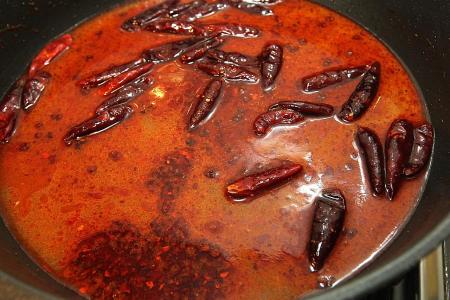Spicy food: Hotter may not mean better
While capsaicin, found in spicy food, can increase metabolism, more research is needed on humans
Eating spicy food supposedly increases metabolism, reduces the risk of vascular-related diseases, relieves pain and more, as some studies suggest.
But such health benefits are not always the case.
According to Dr Eric Hong, a cardiologist from Mount Elizabeth Hospital, capsaicin - a chemical compound in spicy food that gives it its punch - has been shown to cause only small increases in temperature and metabolism.
These increases can also be outweighed by the excessive calories gained from eating spicy food, added Dr Hong.
"Consuming excessive saturated fat and salt that come with spicy food is bad," he said.
"A combination of regular physical exercise and a low-calorie diet is still the best approach to prevent and treat obesity, rather than consuming excessive spicy food to increase metabolism."
Dr Hong said the effects of capsaicin may not last long as the body may develop a tolerance to the heat.
A combination of regular physical exercise and a low-calorie diet is still the best approach to prevent and treat obesity, rather than consuming excessive spicy food to increase metabolism.Cardiologist Eric Hong
Still, there is some theoretical basis that capsaicin can help with hypertension.
Capsaicin was found to reduce the thickening of the walls of blood vessels in mice in studies.
The compound does this by increasing calcium through heat receptor proteins called TRPV1 in the blood vessel cells, thus stimulating an enzyme that causes the blood vessels to widen, added Dr Hong.
Research from small studies also suggests capsaicin boosts the production of nitric oxide, which opens up heart arteries.
Dr Hong said: "This has shown to increase the exercise tolerance of patients with heart disease.
"However, unlike established statins and blood pressure medications, there have been no large human studies to prove that they prevent heart attacks."
PAIN
Topical capsaicin can help with health issues such as arthritis, since it has pain-relieving and anti-inflammatory properties, said Shenton Medical Group's deputy medical director Edwin Chng.
Capsaicin binds to and activates TRPV1, causing a burning sensation.
But if exposed to capsaicin for long enough, nerve cells become desensitised to the pain, Dr Chng said.
However, Dr Hong said despite capsaicin's apparent positive effects, the applications of capsaicin are limited by its pungency, meaning its strong, sharp and thus unpleasant flavour.
It is also difficult to replicate the positive effects of capsaicin from pre-clinical tests on animals in clinical tests on humans, since lower doses of capsaicin are used in clinical tests.
Dr Hong added that high doses of capsaicin may also result in other unforeseen physiological effects.
He said: "Further clinical studies with capsaicin administered in food, capsules or via patches are needed to establish protocols that are tolerable for most patients, and to evaluate the potential of capsaicin for promoting vascular and metabolic health."
Get The New Paper on your phone with the free TNP app. Download from the Apple App Store or Google Play Store now


